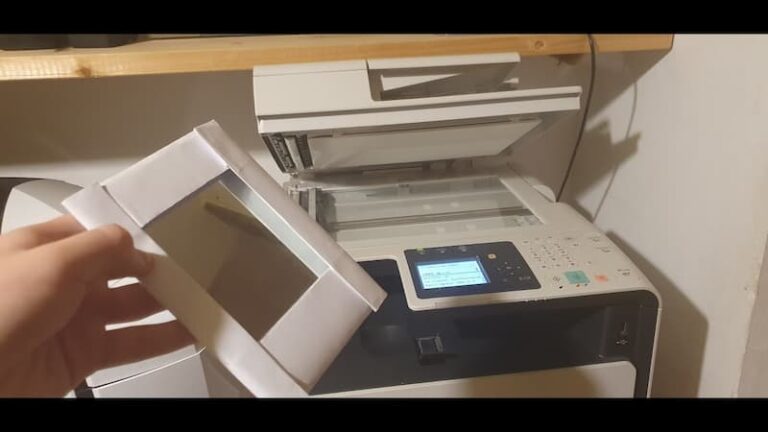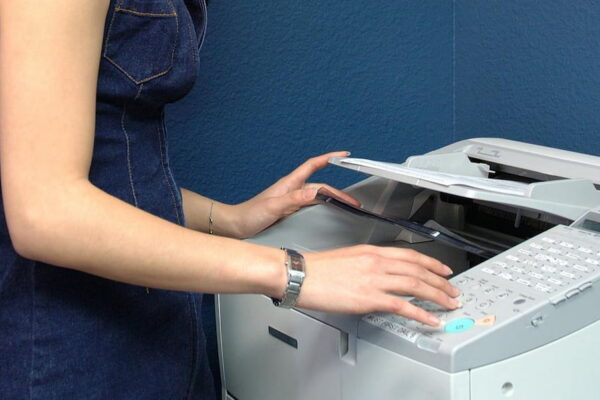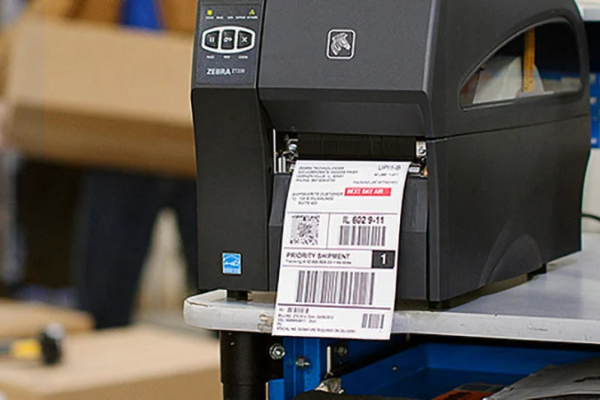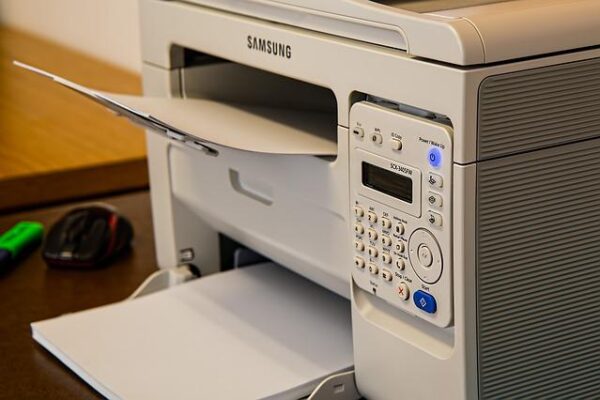First, what happens if you photocopy a mirror?
The entire output will be BLACK because the photocopy machine generates the result after the reflection of light to the white portion of the original copy, in your case if the mirror is placed whole light will reflect back that result as a totally black print.
The original document is lit brightly by a lamp, and the white portions of the original document reflect the light onto the surface of the photoconductive drum. As a result of becoming conductive from exposure to light, the drum’s exposed areas discharge to the ground. Negative charges persist in the portions of the drum that are not exposed to light (those that correspond to the black parts of the original document). The result is a latent electrical image on the surface of the drum
For more details, continue reading.
- What Happens If You Photocopy A Mirror?
- Why Does A Mirror Photocopy Produce A Black Copy?
- How Can A Mirror Be Photocopied?
- How Does The Scanner Work?
- What Takes Place When You Scan A Mirror?
- The Process Of Photocopying
- Will You Elaborate On Your Aversion To Reflections?
- What Happens When You Spend Too Much Time Looking In The Mirror?
- Is It Possible To Create A Mirror That Is Completely Reflective?
- What Happens When Two Mirrors Are Placed Side By Side?
- FAQs
- The End
What Happens If You Photocopy A Mirror?
It depends on the kind of copier (charge drum or CCD camera), as well as the reflectivity, opacity, and specularity of the copied object.
Assuming it is a charge drum, the charge Drum is not aligned with the light source, which has the following effect:
1. All the light is absorbed by the black paper, which makes it appear black.
2. Light reaches the sensor, or drum, through the white paper’s all-pervasive reflections (scattering).
3. The perfectly smooth mirror has no scattering, so according to the laws of reflection (i = r), the reflected light streak will either not hit the sensor (drum) or will just miss the sensor, resulting in a black result.
Why Does A Mirror Photocopy Produce A Black Copy?
There are times when you won’t always see a dark image when scanning a mirror. It also depends on how the photocopy machine scans documents.
The charged area development method (CAD) or “write white” method is employed by some analog photocopiers. A clear or saturated white copy is produced using this method because the photoreceptor drum doesn’t draw in the toner.
Some digital photocopiers also employ the Discharged area development (DAD) method, also known as “Black write.” This method greatly attracts the negatively charged toner thanks to the discharged area in the photoreceptor. Black paper will be the end result.
Typically, scanners are made for less reflective, more or less opaque, and highly specular materials. The mirrors, on the other hand, lack both specularity and opaqueness and are highly reflective.
How Can A Mirror Be Photocopied?
But why, when you photocopy a mirror, won’t you get a bright image??? You must be familiar with the scanning procedure in order to comprehend this. perhaps how a scanner operates? How to scan a mirror?
Scanners with charged drums or those equipped with CCD cameras are typically used. The same rule governs each setup, but the outcomes vary slightly.
- The document is illuminated when it is set on the glass bed by the light source.
- The scanning starts, and the light source moves alongside the track as well.
- The scanner’s angled mirror moves at the same speed as the light source. In the angled mirror, the document can be seen in reflection.
- It records the angled mirror’s reflection of the document.
- The image from the fixed mirror is finally replicated by a charged-couple device, or CCD. You can save the image to your computer’s hard drive.
- In order to achieve optical distance, photocopy machines typically use front coated mirrors.
Continue reading to learn how to copy a mirror after you have a basic understanding of how a photocopier operates:
- On the photocopier’s glass bed, set a mirror.
- To begin scanning, press the “scan” button.
- The photocopier’s black base is observed by the scanner’s movable mirror.
- Finally, you will receive a dark copy of the mirror, which is the reflection of the scanner’s base that was captured on film by the movable mirror.
How Does The Scanner Work?
There are numerous variations to this setup, but at its most fundamental level, the following occurs when you place a paper document on a glass bed and select “scan”:
- A light source shines through the glass bed and illuminates the document. During the scanning process, the light source moves along the track.
- An angled mirror, which is also moving along the track at the same speed, reflects the document.
- A fixed mirror at the opposite end of the scanner captures the first mirror.
- Charge-coupled devices (CCDs) are used to capture the image from fixed mirrors, which can then be saved to a computer’s hard drive.
What Takes Place When You Scan A Mirror?
You might consider what will happen when you scan a mirror before diving headfirst into an adventure. or what outcomes are conceivable? Let’s kill curiosity. A bright image won’t appear when you scan a mirror. Instead, you will receive a black copy for a rear coated mirror and a clear or white copy for a front coated mirror.
A photocopier typically makes a copy after reflecting light onto the white portion of the document. The photoconductive drum’s surface receives the light’s reflection after it strikes the white areas of the document.
The drum’s lit regions turn conductive and discharge to the ground. As the document’s black areas aren’t exposed to light, they continue to be negatively charged. Consequently, a scanned copy is produced on the drum’s surface.
All the light will reflect and produce a black image when a mirror is placed on the scanner’s glass bed. In other words, the detector isn’t struck by the reflected light. A dark copy is produced as a result of the angle of incidence becoming equal to the angle of reflection.
Additionally, the mirror copy will be dark if the light source and the sensor are not aligned. Both must be lined up for the copy to be white.
The Process Of Photocopying
A bright lamp illuminates the original document, and the white portions of the original document reflect the light onto the photoconductive drum’s surface. As a result of becoming conductive, the drum’s exposed light-sensitive areas discharge to the ground. Negative charge is maintained in the drum’s unlit portions, which correspond to the black parts of the original document. A latent electrical image appears on the surface of the drum as a result.
Perfect reflectivity, no specularity, and no opaqueness characterize the ideal mirror. Most copiers are made to handle materials with high specularity, variable opacity, and relatively low reflectivity. Depending on how the copying machine is made, I can envision at least 3 outcomes for the mirror experiment. As was previously stated, when this happens, you typically see black because the light source and the detector are out of alignment. The image will be a saturated white if the light source and detector are lined up. The image would be slightly out of focus (assume diffuse illumination) if the detector were a ccd camera. See more about What Is A Photocopier?
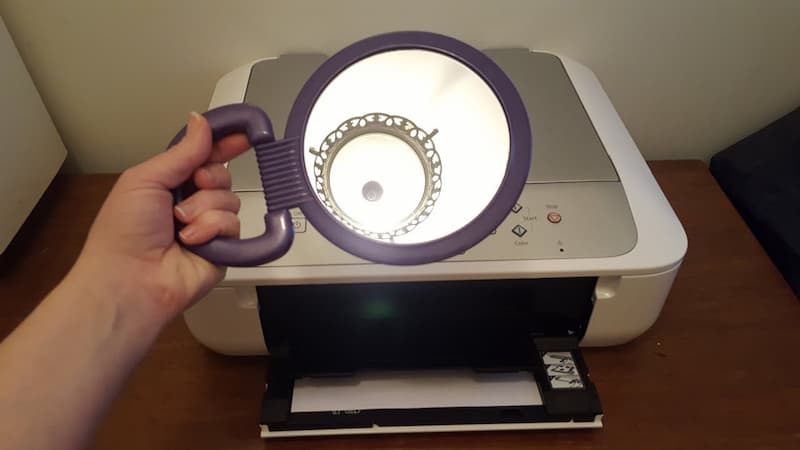
Will You Elaborate On Your Aversion To Reflections?
My healthy aversion to mirrors has grown, I suppose.
My body began to deteriorate when I turned 50 and went through menopause. I looked particularly bulldog-like because of my jowls.
I have a lit makeup mirror in my bathroom. I placed bright bulbs there with great care and intention: half in a bluish hue and the others, warm. The outcome is very flattering: my neck disappears under my ever-wavering jawline, and Anything that looks blotchy, I can see (and cover with makeup). That lip liner is really good, too! Nice job with the smokey eye!
I would then occasionally catch a glimpse of myself during the day in a store mirror or the bathroom at work. These mirrors, for some reason, didn’t reflect me, but rather a chubby, elderly woman wearing excessive makeup! All the other mirrors in the world must have some sort of issue! Right?!
I then purchased several pairs of rocking tight jeans after losing 50 pounds. I reduced my use of purple eyeshadow and abandoned using lower lash mascara, and presto! Hey, even at 50+++, I still look good!
My day of reckoning arrived when I visited my neighborhood pharmacy. With my tight black jeans, high heels, and cute top, I was feeling really good. I decided to use the “facilities” before shopping, so I headed to the back of the store where the bathrooms are…
But first, Oh My, look at this gorgeous man coming straight at me! As he got closer to me, I made full eye contact with him. He was fit, not too young, not too old, and well-groomed. I was muttering, “What’s happening, hotstuff?” in my head.” (Yes, I’m single.)
He walked right past me without noticing me, which baffled me. “I don’t care if he’s gay or married; geez!” I told myself.
My immediate reaction when entering the bathroom was to look in the enormous mirror. The image of herself in the mirror was the same old broad, slightly more wrinkled, crepey neck, flabby arms, and stuffed into jeans intended for a 20-year-old. Her origins are unknown.
I hate mirrors because of this. They all depict this chubby old man. Yet someone who appears somewhat attractive in my home’s mirror. Additionally, I am 28 in my head. Okay, the only time men look at me is when they ask me if I found everything and if I want to use the coupon while they are behind a cash register.” The mirrors are the root of whatever is afoot.
One day, I might be willing to acknowledge my aging and weight. I currently claim that those mirrors are working against me!
What Happens When You Spend Too Much Time Looking In The Mirror?
You begin to realize how much of what we perceive as our physical appearance is actually just a self-delusional perception.
I used to have body dysmorphia, which means I had a very false sense of who I was; I actually thought I was a disgusting person.
It’s impossible to tell how long I stared at the mirror after taking 500 micrograms of LSD, but I saw my face changing in a variety of ways before returning to its original form. I saw myself as a primate, a Brazilian Indian (Native Brazilian, as my mother has strong indigenous features), a samurai (probably because my eyes are a little bit squint), a Spanish conquistador stereotype (I’m 1/16 Spanish), a Japanese warrior
I finally recognized myself. I realized that I wasn’t ugly; in fact, I’m quite attractive. My self-esteem was greatly boosted by it.
I wish that medical professionals could conduct research using psychedelics like they did in the 1960s. No amount of therapy or medication has, I can assure you, had such a profound impact on my self-esteem.
Is It Possible To Create A Mirror That Is Completely Reflective?
What you’re asking about will depend on its intent.
Because of the rounding, some people mistakenly refer to anything above 99.5% as 100%. Is that good enough?
If you mean 100% in terms of math, do you mean at low power levels? At certain wavelengths, we can get at least 99.9999% close. Is that good enough?
Theoretically, you could create a sea of free electrons that would completely reflect light. However, since they won’t remain stationary, the electrons must be in motion.
Do you anticipate that the mirror will continue to reflect at 100% when it is in the focus of a strong laser beam? The response in this situation will be negative. The high electric fields in a high power laser beam will ionize ANY material that the mirror is made of, which draws energy out of the beam and darkens the mirror so that it absorbs the laser beam. In a matter of seconds, a mirror can go from fully reflecting to being reduced to a melted, charred lump.
Hundreds of gallons of water should be pumped through a mirror at a rate of hundreds of gallons per second in order to remove heat that has been absorbed if you are attempting to construct a shield against a high power laser. For high energy laser mirrors, that is what we used to do.
For a petawatt laser pulse, not even an ocean of electrons will do. Using such a beam, the electrons could be changed into positrons.
What Happens When Two Mirrors Are Placed Side By Side?
This is taken from a response to a nearly identical query that I provided some time ago:
I used to frequent a particular barbershop with mirrors on the wall behind and in front of me. I have always been fascinated by the seemingly endless reflections in mirror after mirror.
You get the idea. One mirror reflected the other, which reflected the first one, which reflected the second mirror, which reflected the third mirror, and so on.
This captured my attention. I once took two mirrors, one of which I mounted on the wall of my garage and the other of which I suspended from the ceiling because I’ve always been interested in science. In the suspended one, I made a peephole. In front of the wall mirror, I hung a light bulb halfway between the center and one edge. I was able to see so many lights, but I lost count of them as they dissipated into the distance. They numbered in the thousands. The reflections would curve out of sight with just the slightest movement of the suspended mirror. In actuality, it was challenging to keep the suspended mirror still. The far-off reflections would swiftly disappear from view with a very slight movement.
I moved the hanging mirror a foot or so away from the wall-mounted mirror in order to increase the number of images and to stabilize the mirrors. I also used three stand-offs, which I taped in place, between the mirrors. Since having the mirrors perfectly parallel made it difficult for me to see the lights in the distance, I was able to trim small pieces off the end of the third mirror on one side to change the angle between the mirrors. However, it was a fascinating experiment to see a line of mirrors that appeared to extend for several hundred feet before the light simply faded out of view in a hazy line.
FAQs
What Would Take Place If You Placed A Mirror Inside The Scanner?
A dark copy will be produced if you place a rear coated mirror in the scanner. The photocopier’s delivery of the document’s reflection is the cause. The entire light will reflect in the case of the mirror, producing a dark copy. The light will be dispersed by the front-coated mirror, creating a clear copy.
What Takes Place When You Photocopy Water?
If you photocopy water, the result will be an outline of the water puddle that is currently present on the glass bed. The paper will acquire a wet appearance as a result.
What Are The Effects Of Photocopying Fire?
It can be very dangerous to photocopy fire. You will receive a clean copy regardless of whether you use the technique demonstrated by Ceapa cool in his video.
The End
Everything continues to function in the same manner, with the exception that the scanner’s movable mirror is now reflecting what is below rather than seeing a document. The inside base of the scanner is dark and is located below. Therefore, the main thing your scan will pick up is a dark reflection, possibly some fingerprints or light scratches, but no bright objects.
A front-coated mirror and a rear-coated mirror are both options. If you use the first one, it will produce a black copy, and if you use it later, it will produce a white copy that is blank. Since the rear coated one reflects the light, Front coated mirrors are used in photocopier optics to achieve optical distance.
Please post a question in the comments if you have any. Many thanks for reading!

